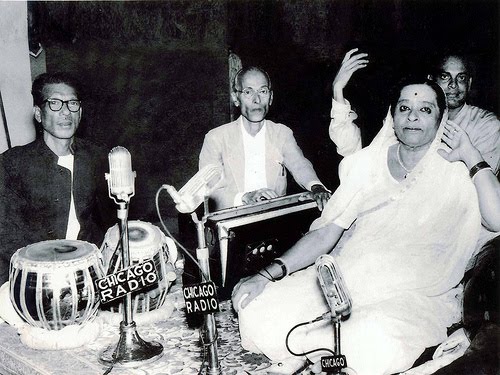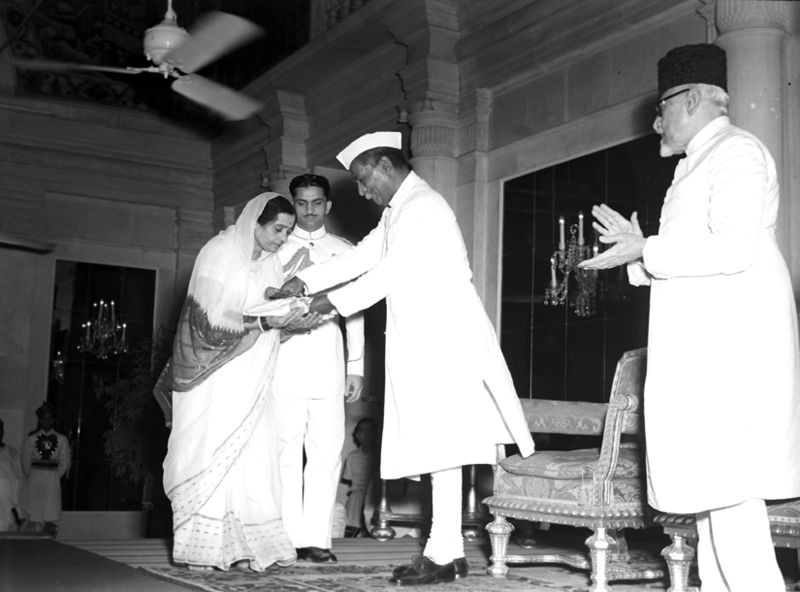Kesarbai Kerkar (1892-1977)
In the history of Hindustani music, Jaipur gharana came to be known for its balanced integration of swar and laya coupled with a highly complex and intricate style of elaborating a raag. It is this intimidating complexity that Kesarbai Kerkar, one of the foremost musicians of the Jaipur style of singing, beautifully mastered and brought to her audience with a stamp of undisputed authority. In early 1900s, she broke out of the devadasi tradition and became a highly revered and celebrated artist of her time.
Born in Keri (Goa), Kesarbai began her musical training at the age of ten under Ustad Abdul Karim Khan when her family shifted to Kolhapur. This continued only for a few months till her family returned to Goa in 1901 where she started learning under Pt. Vazebuwa. When her family moved to Bombay in 1909, she learnt under Ustad Barkatullah Khan (been player) for about a year. For a couple of months she also learnt from Pt. Bhaskarbuwa Bakhle. Her training so far was irregular and it was only from 1920 that her talim started under Ustad Alladiya Khan for the next fifteen years. From anecdotes we learn that it was after a musical gathering at a friend’s place in Bombay in 1918 that she decided to start her training seriously under nobody other than him. In an interview she recounts that she was unable to pull off a Miya Malhar that she had learnt from Barkatullah Khan. One of the famous patrons of the city who had incidentally also persuaded Barkatullah to teach Kesarbai rebuked her publicly for her performance. A sense of failure and humiliation drove her to take up music training in a sustained manner. It was not easy to convince Alladiya Khan to take her as his disciple and it was only after much persuasion that he decided to teach her under some strict conditions.
What has often struck listeners and musicologists is her capacity to retain her breath over long intervals which was considered unusual to a female voice. Full-throated and voluminous, her voice hits you with its boldness and clarity. To avoid any disruption to this projection of the voice it is said that she consciously avoided the use of microphones in concerts. A quintessential characteristic of Jaipur gharana is its stress on mastering complex and uncommon or rare (aprachalit) raag. Kesarbai’s repertoire includes raag like Khokar, different varieties of Kanhada, Badhans-sarang, Hindol-bahar, Jaun-bahar, to name a few. She was awarded the title ‘Surashri’ in 1938, a scroll of honour by the then President of India in 1953 and conferred the Padmabhushan in 1959. Around 1965, feeling that her health would come in the way of her unwavering musicianship, she declared that she would stop giving public performances.
Her majestic voice continues to hold sway over audiences and resonates not just on earth. An album titled Sounds of Earth was compiled for NASA’s space probe Voyager I and among Beethoven, Mozart and Bach what reverberates for eternity in outer space is Kesarbai’s rendition of ‘Jaat Kahan Ho’ in raag Bhairavi.
 Government of Indiaa
Government of Indiaa




 Recognizing the ongoing need to position itself for the digital future, Indian Culture is an initiative by the Ministry of Culture. A platform that hosts data of cultural relevance from various repositories and institutions all over India.
Recognizing the ongoing need to position itself for the digital future, Indian Culture is an initiative by the Ministry of Culture. A platform that hosts data of cultural relevance from various repositories and institutions all over India.
